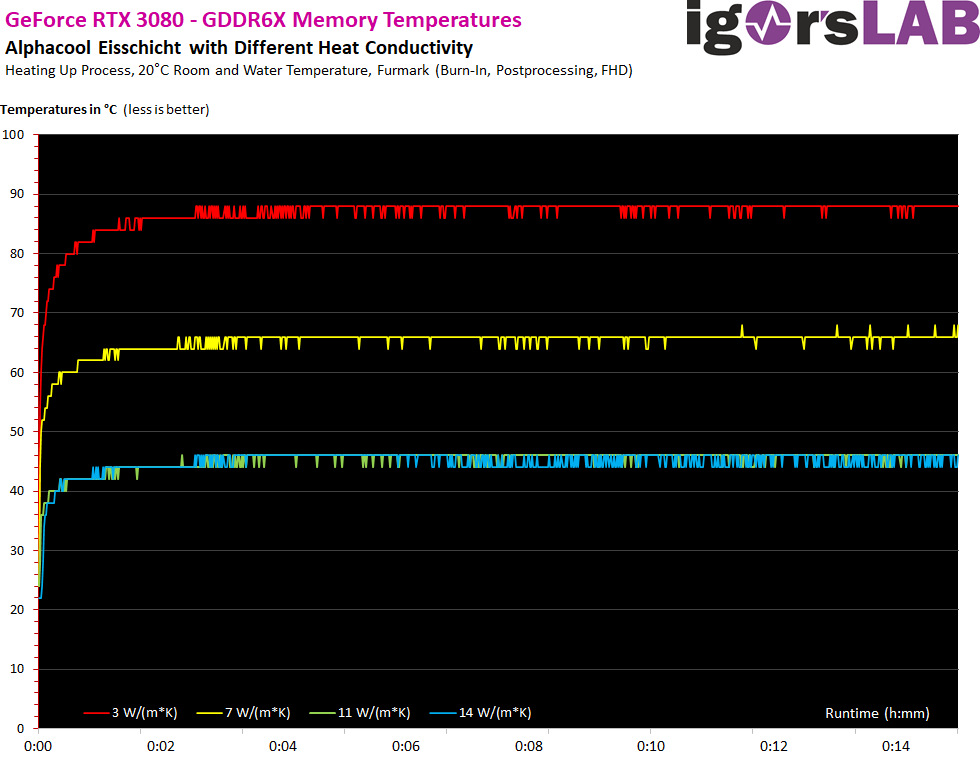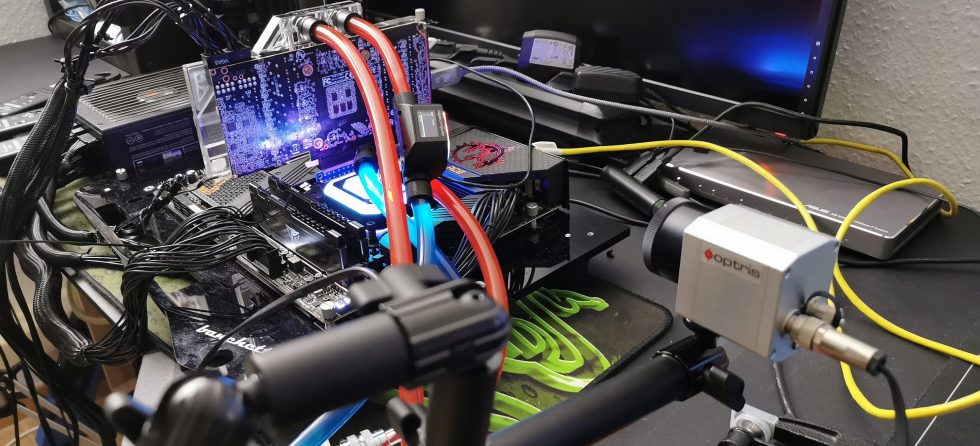So, it’s finally on! I did each run three times and then even ran the last one for over an hour to check. After 4 to 5 minutes all components have reached operating temperature and after about 10 minutes hardly anything fluctuates. You can easily live with the smaller deviations in the curves of 1 to 2 degrees, because these do not result from the cooling, but slightly changing loads. You can see this very clearly, especially with the two better pads.
With up to 88 °C, the simplest pad with its 3 W/(m*K) is also the weakest in the test, which was of course to be expected. The second pad in the test with 7 W/(m*K) performs in a completely different league. With 66 to 68 °C, the RAM is now a whopping 20 degrees lower, which is definitely a real claim! The two extremely powerful pads with the printed 11 and 14 W/(m*K) perform almost identically, with a slight advantage for the pad with the nominally higher thermal conductivity.

However, the achieved 42 to 44 °C are only half of what you have to endure with NVIDIA’s original pads. That is a house number and was not to be expected in this extreme form. But the whole thing is really brutal and worth it, at least in terms of performance. But what does it do for us in financial terms? Let’s put it this way: the financial step from not very performant to quite usable is not even 4 Euro for the two cheaper pads (almost 22 Euro to a lot of 18 Euro). Those who save at the wrong end are almost cheating themselves. Here, as a user, I would prefer the more expensive pad any day.
And what happens further up in the luxury or high-end range? The pad with the 11 W/(m*K) costs with almost 36 Euro 14 Euro more than the one with 7 W/(m*K), but halves the temperatures compared to the cheapest pad and is 20 degrees better than the third placed pad! Whether it’s all worth it to you is something you have to decide for yourself, but I might actually do it. The 85 euro high-end pad, on the other hand, doesn’t bring any real improvement, but costs almost 50 euro more at 85 euro.
This in turn is pointless and merely a waste of money. But I have a nice graphic for just that in a moment.



































Bisher keine Kommentare
Kommentar
Lade neue Kommentare
Artikel-Butler
Alle Kommentare lesen unter igor´sLAB Community →